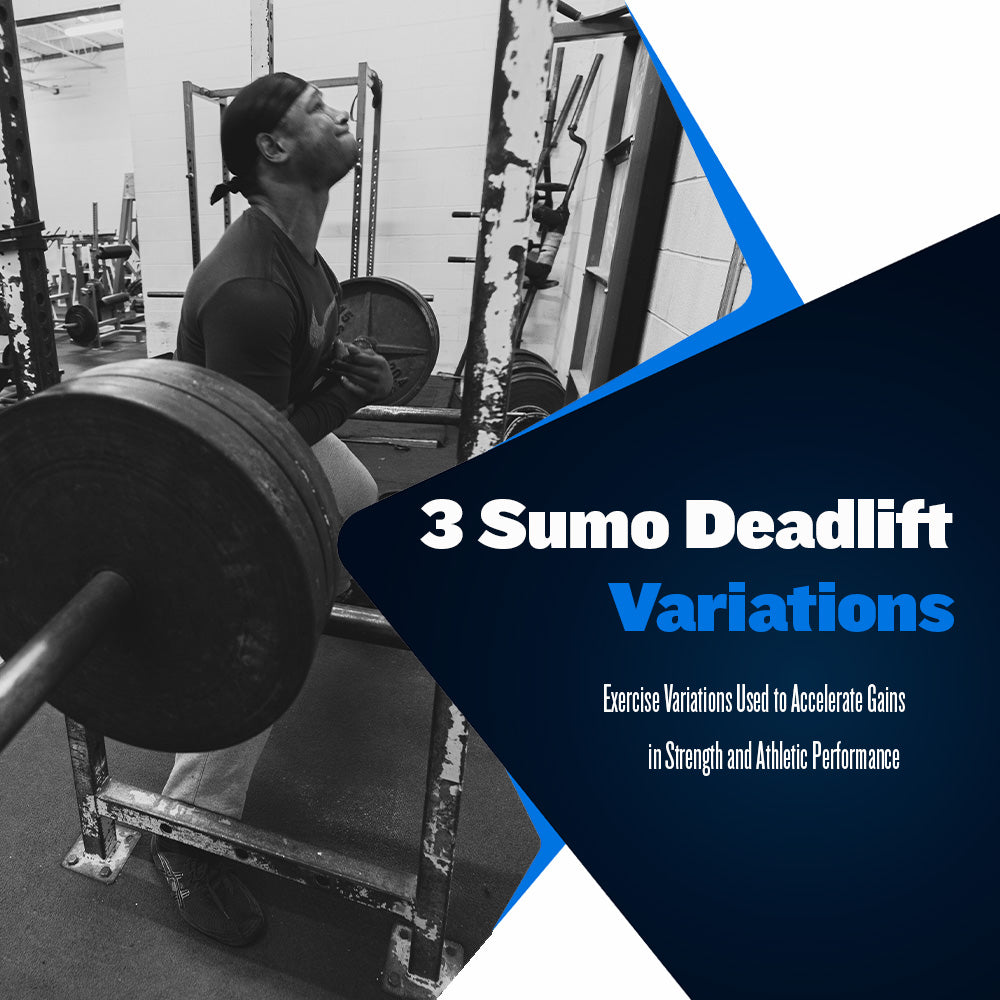3 Recommended Sumo Deadlift Variations

The sumo deadlift is an exercise that offers powerlifters and athletes various training benefits. By utilizing the sumo deadlift, you will gain strength and muscle mass that will carry over to conventional deadlifts and squats. This occurs due to the complete targeting of the hips and legs the sumo deadlift offers.
At Westside, we prefer sumo deadlifts when training athletes in particular due to the ability the sumo deadlift has to increase lateral force production. This is important because, as we know, in sports, you are not constantly moving forwards and backward; you also need the ability to move from side to side.
The sumo deadlift is a valuable exercise that athletes should include in their strength training program regardless of the training goals. If you have hips and legs, you stand to benefit from the strength gains and muscle mass provided by sumo deadlifts.
Here are a few of our go-to sumo deadlift variations that powerlifters or athletes can utilize:
Deficit Sumo Deadlifts
Deficit work is a great way to develop speed off of the floor, as well as increase the emphasis on the hamstrings and glutes. The amount of deficit used will depend on the lifter or athlete. However, starting with a 2” deficit, typically a 45lb plate or mat, is recommended and working up from there.
To execute the exercise optimally, you want to focus on your torso position and sit back to lessen the stretch experienced by the hamstrings. You want to avoid stiff-leg lifting, considering the deficit will additionally stress the hamstrings.
When performed as a main exercise, we typically work up to a one-rep max. It is recommended to avoid pulling extremely heavy deficits for multiple reps considering the risk of injury due to poor resets rep to rep. We will pull three to five sets of five to eight reps when performed as an accessory exercise.
Mat Sumo Deadlifts vs.Monster Minibands
This exercise is also known as a block pull; at Westside, we use mats. To execute this exercise, you will begin by setting the mats up to place the bar at an elevated starting position. The bands should be doubled over just as they would be for speed deadlifts.
Where you elevate the bar will depend on your training needs; however, we recommend setting the bar up where you first begin to lose speed in your sumo pull. Although some will debate over the idea of “sticking point” training, there is no doubt that limited range of motion training can have tremendous benefits in increasing strength at specific joint angles.
This exercise is typically executed as a main exercise only. As far as sets and reps go, you will want to work up to a top set of one, three, or five repetitions.
Sumo Stance Zercher Rack Squat
This exercise is used to afford the legs the benefits of the sumo deadlift and the mid-back and torso the benefits of a Zercher squat. To perform this exercise, you want to stand in the widest sumo stance you can in the squat rack and have the barbell set at the lowest pin setting you can while still being able to pick the bar up Zercher style.
From there, it is pretty simple; you will lift the barbell using your legs, hips, and back to do most of the work. Additionally, this exercise can help athletes improve their torso posture when deadlifting and squatting.
When performed as a main exercise, we recommend working up to a max effort single. We typically perform three to five sets of five to eight reps when used as an accessory exercise. It is important to pay attention to the stress placed on the biceps when working up to heavy weights or when lifting reps. Take time to get solid resets in after each rep.
For more information regarding how we train to increase athletic performance, check out the Westside Barbell blog.




